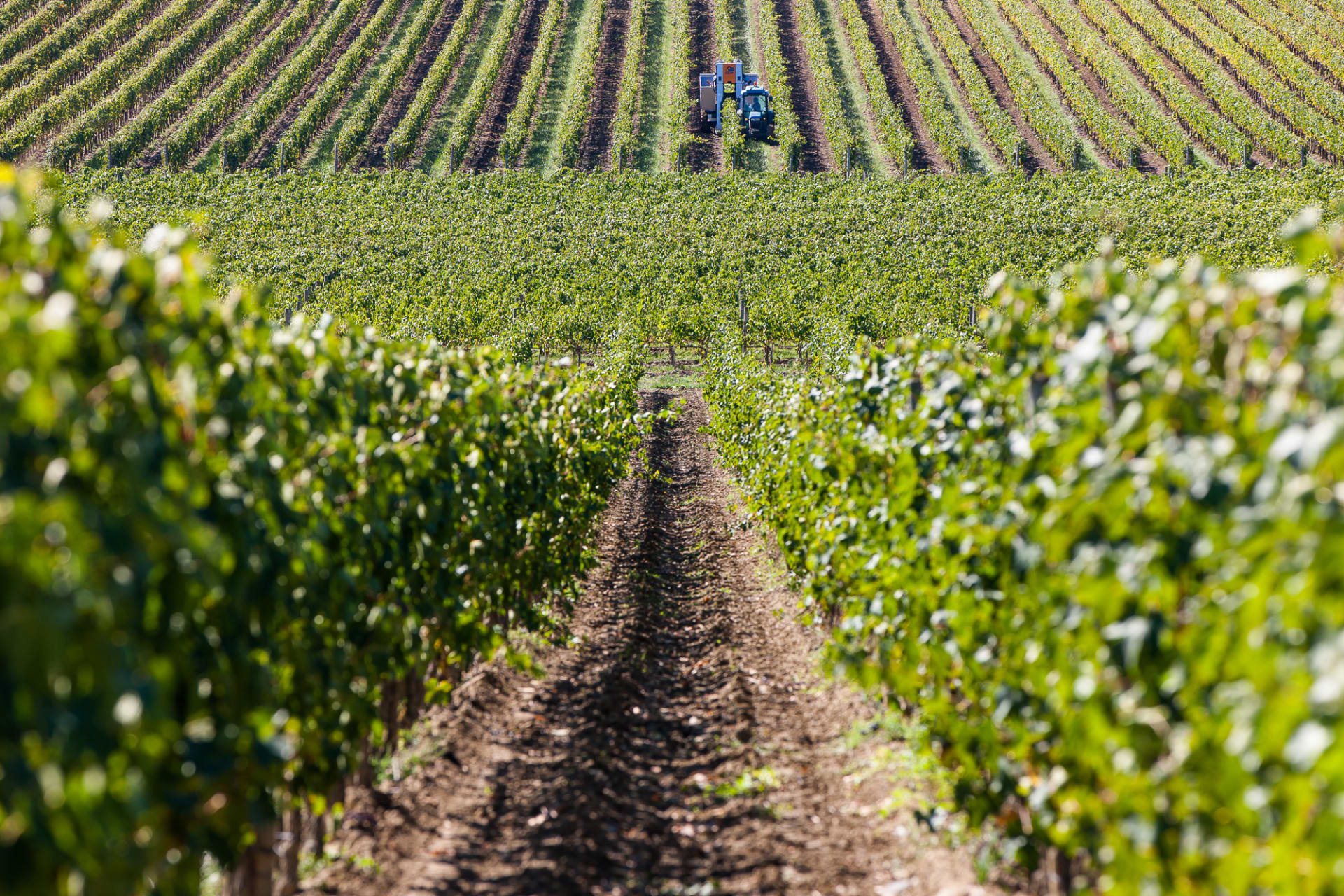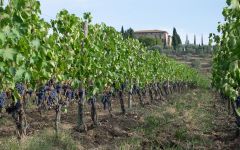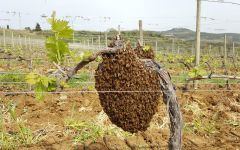Argiano Brunello di Montalcino (1.5 Liter Magnum) 2018
-
Wine
Spectator -
James
Suckling -
Jeb
Dunnuck -
Wine &
Spirits - Decanter
-
Robert
Parker


Product Details
Your Rating
Somm Note
Winemaker Notes
#1 Wine Spectator Top 100 of 2023
The nose is broad and complex, yet clean and fresh, with classic hints of red fruit mixed with notes of aromatic herbs and spices. In the mouth, the wine is broad, robust, and savory, with silky tannins and a long, fresh finish.
Blend: 100% Sangiovese
Professional Ratings
-
Wine Spectator
Rose, strawberry and cherry aromas and flavors are the main themes in this red, along with wild herb, mineral and cut hay accents. Racy and full of energy, with a long, saturated finish. Best from 2025 through 2042.
-
James Suckling
A bright and fresh 2018 with cherry and floral aromas and flavors. Medium body, refined tannins and a linear finish with bright acidity. Tangy and energetic. Tight at the end. A year or two will open it, but already a beauty.
-
Jeb Dunnuck
Pure and noble, the 2018 Brunello Di Montalcino is compelling in its expressive layers yet remains transparent, with aromas of fresh leather, red cherry, cedar, anise, and fresh pine all intertwining. It is medium-bodied but fills out with wonderful purity in its notes of blood orange, raspberry, saline minerals, and mouthwatering acidity. It is a gorgeous wine to hold another couple of years and best after 2025.
-
Wine & Spirits
Scents of fresh rose petals unfurl in the glass, signaling a high-toned Brunello that is packed with tangy red cherry and berry flavors. There's plenty of power and depth here, but also a delicacy in the intense floral aromas and finely honed tannins that combine immediate appeal with excellent aging potential.
-
Decanter
Argiano is back on track with this excellent value 2018 Brunello. Packed with flavour, it shows the vintage well: while colour is scarce - pale garnet in hue - aromas are vivacious and enticing with spiced cherry and Mediterranean flowers bursting from the glass. Midweight and fluid, it belies the vineyards’ warm southern location. Tannins are fine and layered, with a chalky texture. While the estate did come out with its Vigna del Suolo selection, there will not be a Riserva bottling of 2018.
-
Robert Parker's Wine Advocate
With the black label, the 2018 Brunello di Montalcino reveals dried fruit aromas with cola, grilled herb, candied orange peel and earthy clay. This is a mid-weight Brunello with silky tannins and a long finish. It displays a savory and spicy personality with hints of dried fruit and baked plum that add a fleeting point of sweetness.
Other Vintages
2017-
James
Suckling -
Wine &
Spirits -
Robert
Parker -
Wine
Spectator -
Wine
Enthusiast
-
James
Suckling - Decanter
-
Wine
Enthusiast -
Jeb
Dunnuck -
Robert
Parker -
Wine
Spectator
- Decanter
-
James
Suckling -
Robert
Parker -
Wine
Spectator -
Wine
Enthusiast
-
James
Suckling -
Robert
Parker
-
James
Suckling -
Wine
Enthusiast -
Wine
Spectator -
Robert
Parker
-
James
Suckling -
Robert
Parker -
Wine
Spectator -
Wine
Enthusiast
-
Robert
Parker -
James
Suckling -
Wilfred
Wong -
Wine
Enthusiast
-
James
Suckling -
Robert
Parker -
Wine
Spectator -
Wine &
Spirits
-
Robert
Parker -
James
Suckling -
Wine
Spectator
-
James
Suckling -
Robert
Parker -
Wine &
Spirits -
Wine
Enthusiast -
Wine
Spectator
-
Wine
Enthusiast
-
Wine
Enthusiast -
Wine
Spectator -
James
Suckling
-
Wine
Spectator
-
James
Suckling -
Wine
Spectator -
Robert
Parker
-
Wine
Enthusiast -
Wine
Spectator -
Robert
Parker
-
Wine
Spectator
-
Wine
Spectator
-
Robert
Parker





After this estate was acquired by Countess Noemi Marone Cinzano, the philosophy changed whereby quality and personality became the dominant priorities. In order to achieve these goals, Sebastiano Rosa was appointed as General Manager of the Estate. Having spent six years at the University of California at Davis, a two year tenure at Chateau Lafite Rothschild and three years at Sassacaia, he brings a strong mix of experience. In addition, Dr. Giacomo Tachis, probably the most well known winemaker in Italy today, became the oenologist. His legacy includes Sassacaia, Tignanello and Solaia, to name a few. Argiano's vineyards are located in the Montalicino area where a perfect microclimate assures a super ecological system. Varietals such as Cabernet Sauvignon, Merlot, Syrah and Sangiovese are planted. These grapes have not traditionally been part of the Montalcino area.

Among Italy's elite red grape varieties, Sangiovese has the perfect intersection of bright red fruit and savory earthiness and is responsible for the best red wines of Tuscany. While it is best known as the chief component of Chianti, it is also the main grape in Vino Nobile di Montepulciano and reaches the height of its power and intensity in the complex, long-lived Brunello di Montalcino. Somm Secret—Sangiovese doubles under the alias, Nielluccio, on the French island of Corsica where it produces distinctly floral and refreshing reds and rosés.

Famous for its bold, layered and long-lived red, Brunello di Montalcino, the town of Montalcino is about 70 miles south of Florence, and has a warmer and drier climate than that of its neighbor, Chianti. The Sangiovese grape is king here, as it is in Chianti, but Montalcino has its own clone called Brunello.
The Brunello vineyards of Montalcino blanket the rolling hills surrounding the village and fan out at various elevations, creating the potential for Brunello wines expressing different styles. From the valleys, where deeper deposits of clay are found, come wines typically bolder, more concentrated and rich in opulent black fruit. The hillside vineyards produce wines more concentrated in red fruits and floral aromas; these sites reach up to over 1,600 feet and have shallow soils of rocks and shale.
Brunello di Montalcino by law must be aged a minimum of four years, including two years in barrel before realease and once released, typically needs more time in bottle for its drinking potential to be fully reached. The good news is that Montalcino makes a “baby brother” version. The wines called Rosso di Montalcino are often made from younger vines, aged for about a year before release, offer extraordinary values and are ready to drink young.
